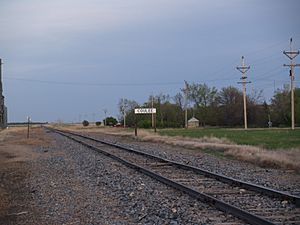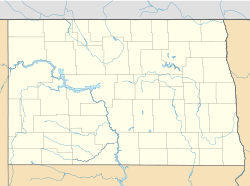Coulee, Mountrail County, North Dakota facts for kids
Quick facts for kids
Coulee, North Dakota
|
|
|---|---|

Railroad in Coulee
|
|
| Country | United States |
| State | North Dakota |
| County | Mountrail |
| Elevation | 2,064 ft (629 m) |
| Time zone | UTC-6 (Central (CST)) |
| • Summer (DST) | UTC-5 (CDT) |
| Area code(s) | 701 |
| GNIS feature ID | 1028477 |
Coulee is a small, quiet place in Mountrail County, North Dakota, in the United States. It's located right on the edge of Ward County. Coulee is known as an unincorporated community. This means it's a group of homes and buildings that don't have their own local government, like a city or town does. Instead, it's managed by the county government.
Contents
Coulee: A Small Place in North Dakota
Coulee might be small, but it has a special history. It's a place where people live and work, just like in bigger towns, but without all the official city rules. Think of it as a neighborhood that's part of a larger county area.
What is an Unincorporated Community?
An unincorporated community is a place where people live together, but it doesn't have its own official city government. This means there's no mayor or city council just for Coulee. Instead, services like roads and police are handled by Mountrail County. Many small communities across the United States are unincorporated.
Our Historic Church
One of the most important places in Coulee is the Our Savior's Scandinavian Lutheran Church. This church is very old and has a lot of history. It's so important that it's listed on the U.S. National Register of Historic Places. This list includes buildings, sites, and objects that are important to American history.
Why is it Historic?
The Our Savior's Scandinavian Lutheran Church was built a long time ago by people who came from Scandinavia (countries like Norway, Sweden, and Denmark). It shows how these early settlers lived and practiced their faith in North Dakota. Keeping it on the National Register of Historic Places helps protect it so future generations can learn about its past. It's a reminder of the community's roots and the people who helped build it.



